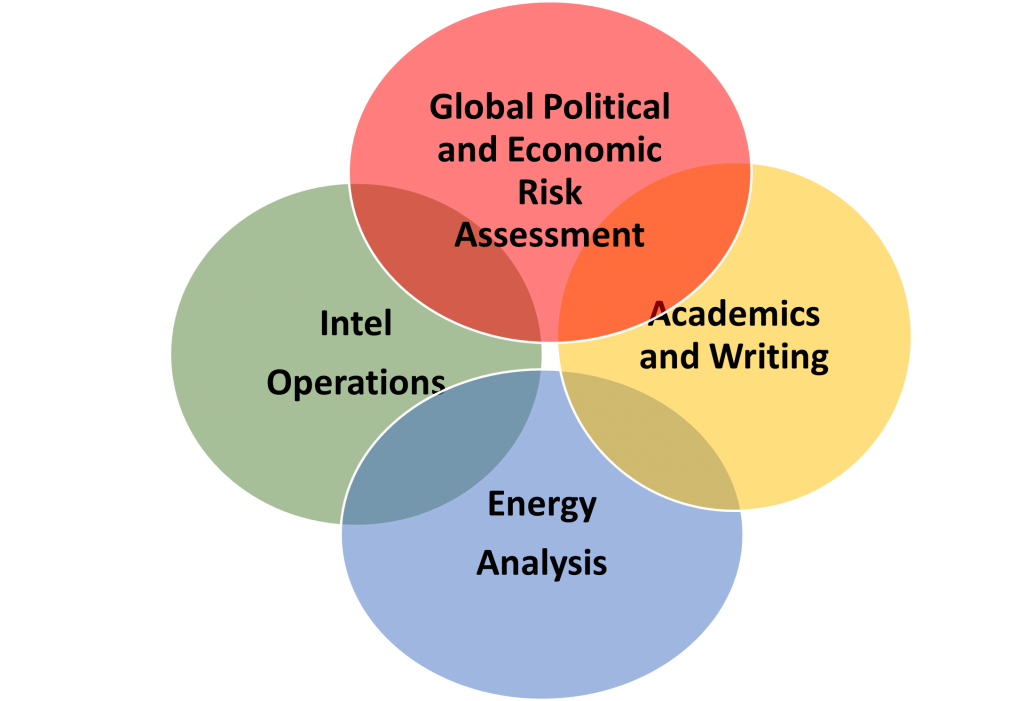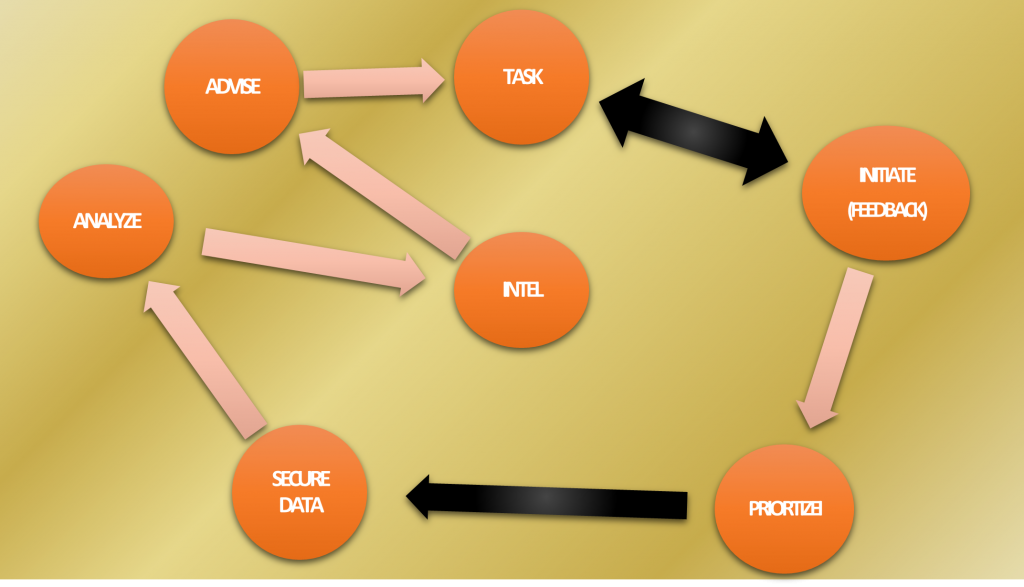

Date: 11/18/2020
Author: Kent Moors, Ph.D.
I initiated Classified Intelligence Brief on August 24 with an entry entitled “A Tale of Changing Investment Risk, Part I”. That was the first of a two-part piece addressing how to play the new risk element emerging in investment markets.
That first CIB began with my recounting an episode from my days in intelligence, one of the pillars upon which my life has been founded. Judging by the response, a number of you apparently enjoyed that glimpse into my past, along with a couple of other “spy tales” in later installments.
So, I decided that I would devote one issue of CIB each week to an episode occurring during that almost forty-year run – either one in which I was involved or something having an impact on what I was doing at the time.
Given that much is still classified, you will be getting what I can say. But the exercise may further assist in understanding better how I operate these days in applying intelligence and analysis to something dear to all our hearts: how one makes profits in the market.
However, first a bit of a personal overview.
I often seem like a living Venn diagram (pictured below) with me in the intersection of four careers: intelligence operations; global political and economic risk assessment; energy analysis, academics & writing. Each of these has been instrumental in adding perspective and insight to everything I do.


But the most compelling probably has come from the decades of intel experience. Most of this took place in parallel with one or more of the other parts of my life. And some unique arrangements emerged in the process.
For example, until I retired a few years ago, my “day job” was as a university professor. Marina (my wife) would not allow me to quit that one since it had something called tenure associated with it, she generally knew when I was coming home, and was reasonably assured that I would not get shot in the process.
Nonetheless, combining these two resulted in an unusual agreement between an academic administration on the one hand and an organ of the US government on the other. More of the nature of such accords will surface in later installments of CIB.
Now the intelligence background has been instrumental in providing a personal education that I have integrated into just about everything else I have done, especially when global risk assessment began occupying more of my time. There is a method and an approach when conducting operations and the hours of analysis attached to them.
Years later when lecturing at the US Army War College I explained it with this diagram:


Data describes what something is; analysis tells us what it means; but intel describes how we use and apply it. That mindset has stayed with me wherever I find myself, whoever is on the other side of the contest, or whatever the battle is about.
So, this time around, let’s go back to something contained in the first CIB. That edition began by recounting a strange meeting in a London park with a Soviet counterpart over the sinking of an oil tanker off the coast of Brittany (northwestern France). As I noted, we were using new contact protocols by May of 1978.
Those new designs were set up after a collapse in inter-agency repartee. Not long before, I had been a party to ironing out how a shooting war had begun between the CIA and KGB in Vienna. Standard operating procedures (SOPs) in the Austrian capital had allowed for a more relaxed connection between the two agencies. For some reason that arrangement had broken down and each side started targeting the other. Beginning in 1975, several were killed on both sides and more were wounded (I was in this latter category, the first of my two Hostile Action medals – the intel equivalent of a Purple Heart).
This was an intelligence version of going to the mattresses straight out of The Godfather.
The “Vienna spy war” was winding down by May of 1978 (and my meeting with the KGB guy in Kensington Gardens), but the new contact protocols would be severely strained less than four months later with an assassination (also to occur in London).
The “Vienna firestorm” is the subject of this CIB. The London mess will be addressed next week.
For those of us growing up reading Mad magazine, “Spy vs. Spy” was a humorous characterization of some spook in white and another in black never quite eliminating each other. It was akin to what was happening in Vienna during the mid-1970s, only with far more serious consequences.
Throughout the Cold War, the Austrian capital was the primary location for “open” trade craft. While the divided city of Berlin about an eight-hour drive north was better known, it was Vienna in which interchanges between the CIA and KGB happened more frequently.
From the Cuban Missile Crisis forward there was a “red phone” line directly connecting the White House and the Kremlin. Another aftermath of the Cuban “waltz up to the lip of war” was an agreement that CIA COS (chief of station) in Moscow was appointed only with the knowledge of the KGB. In turn, the head of the KGB rezidentura in the US (usually New York, by the way, not DC—UN-based rather than embassy) was made known to Langley. You needed to know who on the other side to call when the proverbial material hit the rotary oscillator.
This practice would be paralleled in other major capitals worldwide. But it is was in Vienna that the most immediate way for one intel agency to communicate with the other existed. There, COS Vienna and his KGB equivalent would upon occasion be seen in public having breakfast together.
This environment gave way to “Vienna rules,” always distinguished from “Moscow rules.” The latter required no direct contact with assets, infrequent dead drops, no brush passes, laborious SDRs (surveillance detection routes), and the operating assumption (usually valid) that one was under constant surveillance.
Vienna rules were more relaxed. This was the city in which espionage officers had an agreement to allow each other to work. Upon occasion, one side would even let the other know what was about to take place, providing of course that it had no real impact on the adversary’s security or immediate interests. And if information had to be passed quickly, it would happen here.
All of which makes what happened in Vienna beginning in 1975 so difficult to understand. Each side started shooting the other. It began slowly and then escalated. By the time it was finished, the CIA had lost eight officers, twice that wounded, with additional local assets killed; the KGB at least as many dead and injured, several others recalled.
In the middle of this, I was one of several sent in separate assignments to Vienna from the outside to assess the collapse. Given concerns over the integrity of Vienna Station (and you can read whatever you want into that because I cannot provide any additional information), we outsiders were not in the direct line of agency command.
My base at the time was London. My overt position was as foreign lecturer at the London School of Economics and Political Science (LSE) with an additional appointment as a research fellow at the Centre for Strategic Studies. Both gave me ready cover for other activities.
I was shuttled to Vienna by way of West Berlin. There, I gave two academic addresses in three days at Freie Universität (Free University Berlin, often abbreviated FU Berlin, or less charitably simply FU; created by the US after World War II, it became a major research institution in the social science and humanities).
I was ostensibly moving on to Austria to provide a lecture at the Diplomatische Akademie Wien – DAW, the Vienna School of International Studies (Diplomatic Academy), a postgraduate only institute providing a range of courses, including a series to Austrian and other government officials. The lecture was one of the same I had given several days earlier in Berlin.
DAW was also by design my location for a KGB contact with whom I was to coordinate. There was a developing interest among the higher pay grades on both sides to determine how the shooting had gotten out of hand.
After all, there is an old adage in the business that goes: one shooting could be accidental; two could be a coincidence; but three times is a flat-out act of war.
Ultimately, a few explanations emerged as to what caused the mess. All of this remains classified (sorry), but in very general terms appeared to constitute three elements: failure to follow procedures; a series of misreads; and (apparently) a dispute over a local woman.
It all curiously ended when the CIA and KGB ignored who started it and issued at the same time a de minis order which essentially told personnel to stop threatening each other (with or without the involvement of Glocks on our end or Makarovs on theirs).
My medals from this included one of my two Distinguished Intelligence Medals and one of my two Hostile Action Medals. I was wounded in a crossfire on Liechtensteinstaße, behind the US Embassy at Boltzmanngasse 16 (pictured below). My KGB contact was also wounded during the exchange and disappeared.


This multi-year episode is a good example of how matters left untreated mushroom into major problems. It also exemplifies how a series of mistakes in moving from analysis to intelligence (moving from “meaning” to “application,” as per the diagram above) can result in an incorrect read and an accelerating crisis.
These days, the lessons I learned in Vienna color how I review things like an analyst’s view of a company or an expanding geopolitical problem impacting trade and markets.
It also animates one of the two primary lessons I would instill in my university graduate students. Success in life, I used to tell them, requires learning to work with people you do not like personally. Much of the Cold War was about doing just that.
And the other “primary lesson?” Well, that will figure in a later “spy tale.”


Dr. Kent Moors
This is an installment of Classified Intelligence Brief, your guide to what’s really happening behind the headlines… and how to profit from it.
Dr. Kent Moors served the United States for 30 years as one of the most highly decorated intelligence operatives alive today (including THREE Presidential commendations). After moving through the inner circles of royalty, oligarchs, billionaires, and the uber-rich, he discovered some of the most important secrets regarding finance, geo-politics, and business. As a result, he built one of the most impressive rolodexes in the world. His insights and network of contacts took him from a Vietnam veteran to becoming one of the globe’s most sought after consultants, with clients including six of the largest energy companies and the United States government.
Now, Dr. Moors is sharing his proprietary research every week… knowledge filtered through his decades as an internationally recognized professor and scholar, intelligence operative, business consultant, investor, and geo-political “troubleshooter.”
This publication is designed to give you an insider’s view of what is really happening on the geo-political stage. You can sign up for FREE to Classified Intelligence Brief and begin receiving insights from Dr. Moors and his team immediately.
Just click here – https://classifiedintelligencebrief.com/






